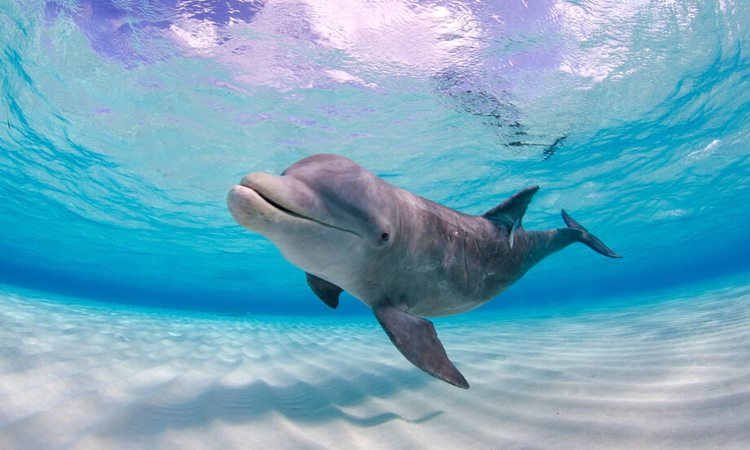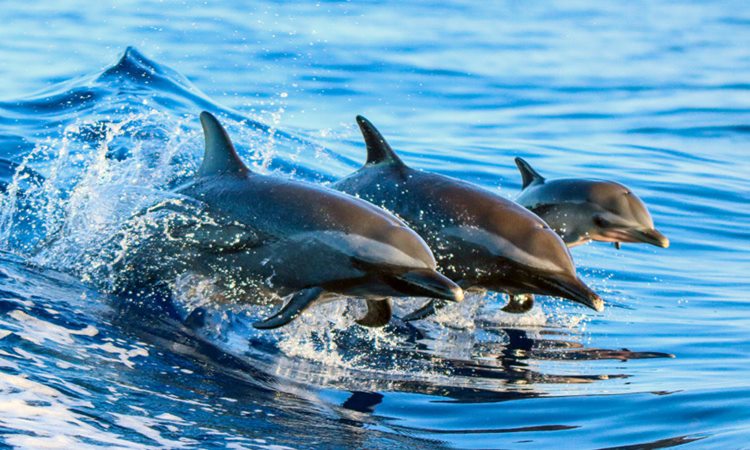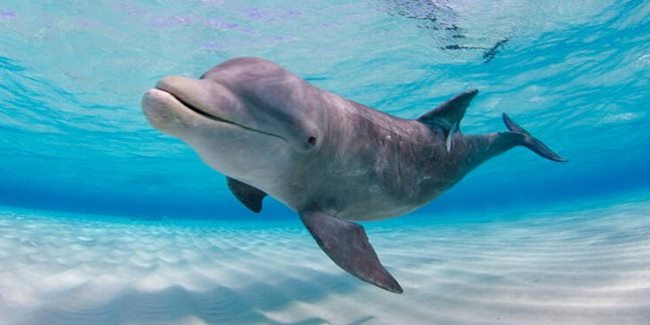Here’s 6 Amazing Dolphin Facts That Will Surprise You
DOLPHIN FACTS – Here are six (6) fascinating facts regarding dolphins that you may not be aware of.
Dolphins hold a special place in people’s hearts due to their intelligence, charming vocalizations, friendliness toward humans, and even their love for surfing.
Yet, beyond these entertaining qualities, dolphins demonstrate remarkable physiological abilities and engage in astonishing behaviors. Here are six intriguing facts that may surprise you.

1. Dolphins Call Each Other by Their Names
Dolphins communicate through a variety of squeaks, grunts, and clicks. While the exact meanings of these sounds remain unknown to marine biologists, certain sounds function as identifying calls. For example, the common bottlenose dolphin forms a distinctive melodic pattern of whistles, enabling others to identify it even in challenging underwater conditions. Recent studies suggest that dolphins imitate the whistles of close companions and family, showcasing a level of sophisticated interaction rarely observed outside the human world.
2. Dolphins Turn Off Half Their Brains to Sleep
As oxygen-dependent mammals in water, dolphins have developed a unique sleeping strategy. They undergo unihemispheric slow-wave sleep, with one hemisphere sleeping while the other remains awake at a low level of alertness. This adaptation allows dolphins to maintain control over their breathing. Unlike humans, dolphins achieve around four hours of slow-wave sleep for each brain hemisphere in a 24-hour period, mirroring the recommended eight hours of sleep for humans.
3. Dolphins Teach Each Other to Use Tools
Bottlenose dolphins in Shark Bay, Australia, showcase tool use by employing marine sponges to protect their snouts while hunting for small fish. Mothers pass down this foraging technique to their offspring, with females displaying greater interest in learning than males. Furthermore, dolphins in the same region engage in peer-to-peer learning for a technique known as “shelling,” using giant snail shells to catch and consume prey.

4. Dolphins Have Three Stomachs
Despite their lack of table manners, dolphins possess a three-chambered stomach designed for efficient digestion. The forestomach stores food, the main stomach handles digestion, and the pyloric chamber completes digestion and regulates passage into the small intestine. This process supports the bottlenose dolphin’s daily intake of 25 to 50 pounds of fish, squid, and crustaceans.
5. Dolphins Have Remarkable Powers of Recuperation
Dolphins display remarkable recuperative powers, illustrated by their ability to regenerate tissue after major injuries. Research indicates that dolphins can recover from substantial flesh loss due to shark attacks, regaining their full-body contour within approximately 30 days. This process occurs without signs of distress, suggesting a naturally triggered form of pain relief accompanies their exceptional healing capabilities.
6. The U.S. Military Uses Highly-Trained Dolphins
Since 1959, dolphins have been integral to the U.S. Navy’s Marine Mammal Program, working alongside sea lions. These highly intelligent creatures are trained for tasks such as detecting underwater mines using their sonar capabilities and aiding in apprehending unauthorized swimmers. Dolphins have been deployed in real combat situations, including the Vietnam and Iraq wars, and currently contribute to safeguarding America’s nuclear stockpile at Naval Base Kitsap near Seattle, Washington.
In a previous article, we shared the reason behind baby elephants’ trunk-s*cking behavior.

